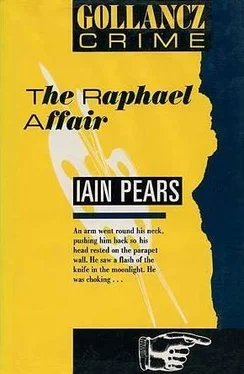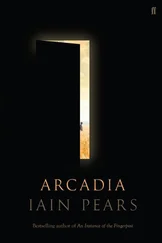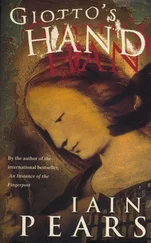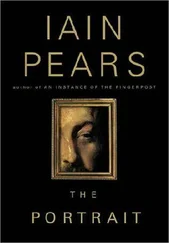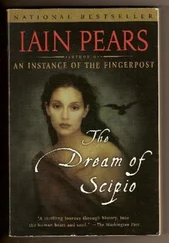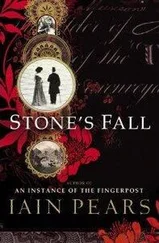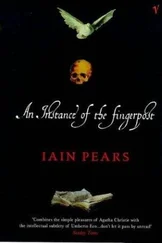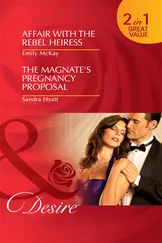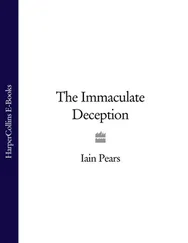Another rumble from the audience, like a mass attack of indigestion. Argyll paused to let it subside, and winked at Flavia in the front row. He straightened his face to deliver the knock-out.
‘So what next? Lady Arabella has already delivered her opinion about her husband’s pictures, and what she wanted to do with them. Copies and impositions that should be hidden away. This is exactly what happens, and they have stayed there, for the most part, ever since. Those that weren’t sold before the family vacated the premises in the 1940s are still in their original positions, in lesser bedrooms, down dark corridors or in the cellars.’
He paused for maximum effect. He’d been practising for days. ‘According to surviving inventories, Raphael’s picture of Elisabetta di Laguna — bought by the Earl, painted over by Mantini, uncovered and delivered in good faith by Samuel Paris — hung just outside the staff entrance to the kitchens, its true worth entirely unrecognised. It rested there, being splattered with gravy from passing trolleys, caked with smoke and covered with spilt coffee, for more than two hundred years. Its condition by the time it was sold at Christie’s in 1947 was dreadful.’
Argyll had once heard a psychiatrist analyse the speeches of successful politicians. The man had explained that many of them, to create an air of excitement, persuade the audience to clap; then shout the next few lines of the speech over the applause, thus creating an impression of spellbinding oratory. He had wanted to try this for years. His statement about the gravy caused a respectable stir, so he raised his voice and ploughed on.
‘From here on tracing the picture is a routine matter of provenance work.’
They calmed down a bit, so he paused, took a sip from his glass of water, and let them wait. Of all his discoveries of the past year — and he was the first to admit that some had proven embarrassingly below par — he was the most proud of this one. It called for observation, intuition and imagination, the sort of things he normally wasn’t very good at. This proved he could do it when he tried.
‘At the 1947 sale, the picture was bought by one Robert MacWilliam, a Scottish doctor. He died in 1972 and it was sold at Parson’s in Edinburgh, for two hundred and twenty-five guineas, to none other than Sir Edward Byrnes.’
A hushed silence at this, as they wondered what horrendous revelation came next. ‘When I informed him of this, Sir Edward was greatly gratified. At one stage I was afraid he might die of laughter. When he recovered and thought back, he informed me that he had never suspected that the picture was of any value at all. Indeed, he had not even bothered to have it cleaned. Someone came into his gallery one day, offered a price that gave him a small profit, and he accepted. After some searching, he found the record. The picture had been bought by a small private collector on the Continent. It remained in this collection until he also died a few years back.
‘Now we come to the final stage, and I must apologise to you for delaying so long. The Raphael affair has been embarrassing all round. Technicians, in particular, are still upset by the fact that they didn’t notice the fraud perpetrated on them. Raphael painted in a particular way, and they feel they should have noticed something wrong. I expect there can be few in this audience who do not know the process by which Jean-Luc Morneau created his fake. To do it required immense skill and sympathy for the painter he was imitating. He used Raphael’s techniques, Raphael’s recipes for paint mixtures, Raphael’s style.
‘I hate to have to tell you, but he also used a Raphael. The sale records show that the portrait of Elisabetta di Laguna was sold, as “portrait of a lady, copy after Fra Bartolommeo” for three thousand Belgian francs, to Jean-Luc Morneau. There is one photograph of it.’
The picture Argyll had first seen in a Roman restaurant appeared on the screen. ‘The critical proof is the left hand,’ Argyll continued, indicating the area with a little pointer. ‘You see there is a ring.’ An even more blurred enlargement flashed up. ‘It is designed as two entwined pelicans. That, of course, is the symbol of the di Parma family. Elisabetta was the Marchese’s mistress, and it was quite in order that she should wear the ring to show to whom she belonged. The liaison, after all, was hardly kept a secret.
‘It needs only a brief comparison of the forgery and the original’ — two slides flashed up on the screen — ‘to see the similarities in the backgrounds of the two paintings. That was why the tests failed to reveal that the picture was a fake. The bits examined were very much genuine.
‘Morneau needed an authentic Italian canvas of the right period, and some passable paintwork to create the illusion of a real Raphael. It seems that he had better raw material than he could ever have realised. He scored through the accumulated dirt of two centuries, probably with some dilute acid, to prepare the surface for his work. I don’t imagine that he ever paid much attention to the original painting that lay underneath the grime. To us, after all, it hardly appears to be the representation of a great beauty. Tastes change. Nearly all of Raphael’s work, except this window and parts of the interior against which the figure is framed, was simply erased so that he could paint his fake Raphael on top. As you know, what remained was destroyed, along with Morneau’s work, during the attack in the museum.’
The result was better than he had hoped. He had expected tumultuous applause, roars of approval, programme notes thrown into the air. He got none of that, but the reaction was still more satisfying. Faced with the stunned amazement of the audience, he folded up his paper and stuffed it into his pocket. Then he clattered noisily down the steps from the podium, his metal-tipped shoes echoing across the silent hall. Flavia was waiting for him, beaming with delight.
‘Slow but sure. What a clever thing you are, after all,’ she said. And kissed him, gently, on the nose.
Конец ознакомительного отрывка
Купить книгу
